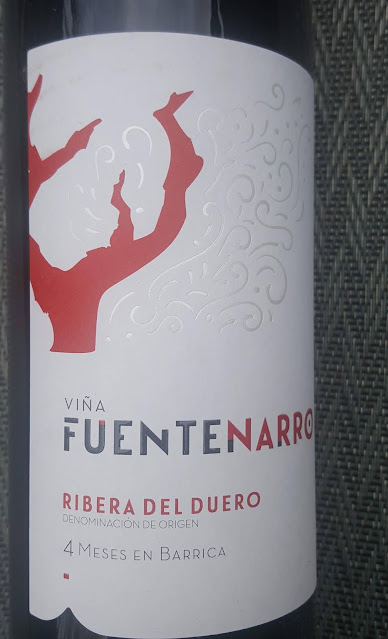Two hard to resist. A Gamay from Brouilly and a Tempranillo from Ribera del Duero.
******
Lapalu Vieilles Vignes Brouilly (AC) 2019, 13%
€30.95 64 Wine Dublin, Bradley’s of Cork, Greenman Dublin, Le Caveau Kilkenny
Mid ruby is the colour of this 100% Gamay from Brouilly in Beaujolais. It carries, more or less, the expected aromas of the grape in the area: red berries and violets. And, on the palate, the fruit and acidity give quite a delicious complexity. Refreshing for sure right to the finish. Some of that complexity no doubts come from the fact that the wine stays at least a half year on its fine lees. I’m always pleased when I have a Beaujolais cru in my hand and particularly pleased with this one. Very Highly Recommended.
The crus produce the flagship wines of Beaujolais and there are ten cru areas in all: Chiroubles, Saint Amour, Fleurie, Régnié, Brouilly, Cote de Brouilly, Juliénas, Chénas, Morgon and Moulin-à-Vent. Each cru will have its own flavour characteristics thanks to the differing soil profiles across the region. You won’t get the Brouilly minerality in every cru.
A cru here can be a fairly serious to serious wine but that doesn’t preclude it from being light and refreshing, even easy-drinking! And, by the way, do feel free to cool this one a little before serving, just like they do in France!
Food pairings suggested include: charcuterie, paté, cheese, seafood paella, roast ham, pork chops, roast lamb, roast chicken, chicken tagine, and turkey and with spicy Asian dishes.
Le Caveau say: Brouilly Vieilles Vignes is the combination of two cuvées, one made by carbonic maceration, the other a traditional vinification with destemmed grapes, the cuvaison lasts for 10 to 20 days. The two cuvées are then assembled after their malolactic fermentation and spend the winter in stainless steel tanks. The dark red fruits on the nose and palate can’t disguise a probing minerality; if ever granite was translated into liquid this is the case.
Viña Fuentenarro “4 Mesas En Barrica” Ribera Del Duero (D0) 2018, 14%
€16.95 64 Wine Dublin, Bradley’s of Cork, Greenman Dublin, Le Caveau Kilkenny
Tempranillo, in many Irish people’s minds, is the grape of Rioja. And it is. But, since the end of the 20th century, the 300 plus bodegas of Ribera Del Duero are also laying a strong claim to the grape by making some excellent wines with it.
This deep red Fuentenarro (from a family owned winery) is a 100% Tempranillo. Traditional aromas of dark berry fruit, touch of spice. Big intro of fruit and spice, no shortage of acidity either, juicy yet dry. Powerful start eases smoothly down to super-long finish. One to sip - a little goes a long way - and enjoy your long lunch or dinner as the sun goes down. Even if September (perhaps not this September!) is a little early in the year for it, the Fuentenarro is Very Highly Recommended. That it is well priced is a bonus.
Wine has been produced in this beautiful region since Roman times, though it became well known outside of Spain only in the 1990s. North west of Madrid and south west of Rioja, in the Castilla y León region, the vines grow on a flowing swathe of land that’s approximately 115 kms long and 35 kms wide.
The vast majority (including Fuentenarro, near La Horra) grow in the province of Burgos but some too in Segovia, Soria (Antidoto, for example) and Valladolid.
Two related factors that make Ribera different are the average altitude of 850 metres and the big variations in summer between the heat of the day and the cool of the night. The heat promotes the ripening, the chill of the night preserves acidity.

















